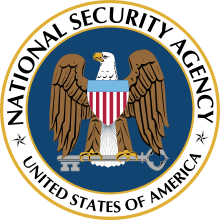Project MINARET
 National Security Agency surveillance |
|---|
 |
|
Programs
|
|
Institutions |
|
Whistleblowers |
Project MINARET was a sister project to Project SHAMROCK operated by the National Security Agency (NSA), which, after intercepting electronic communications that contained the names of predesignated US citizens, passed them to other government law enforcement and intelligence organizations.[1] Intercepted messages were disseminated to the FBI, CIA, Secret Service, Bureau of Narcotics and Dangerous Drugs (BNDD), and the Department of Defense.
The names were on "watch lists" of American citizens, generated by Executive Branch law enforcement and intelligence agencies, to detect communications involving the listed individuals. There was no judicial oversight, and the project had no warrants for interception.
The 1972 Keith decision by the U.S. Supreme Court became a controversial issue mainly because, even though the court had confirmed that the government had the authority to protect the nation from subversive activity, it ruled against the government's ability to use warrantless electronic surveillance for domestic espionage purposes. This controversy became a major case against Project MINARET.
Operating between 1967 and 1973, over 5,925 foreigners and 1,690 organizations and US citizens were included on the Project MINARET watch lists. NSA Director, Lew Allen, testified before the Senate Intelligence Committee in 1975 that the NSA had issued over 3,900 reports on the watch-listed Americans.
One result of these investigations was the 1978 creation of the Foreign Intelligence Surveillance Act (FISA), which limited the powers of the NSA and put in place a process of warrants and judicial review. Another internal safeguard was U.S. Signal Intelligence Directive 18, an internal NSA and intelligence community set of procedures, originally issued in 1980,[2] and updated in 1993. USSID 18 was the general guideline for handling signals intelligence (SIGINT) inadvertently collected on US citizens, without a warrant, prior to the George W. Bush Administration. Interpretations of FISA and the principles of USSID 18 by the Bush administration assume the Executive Branch has unitary authority for warrantless surveillance, which is under Congressional investigation as an apparent violation of the intent of FISA.
Domestic targets
1,650 U.S. citizens were targeted, including prominent anti-Vietnam War critics. U.S. Senator Howard Baker, civil rights leaders Martin Luther King, Jr. and Whitney Young, boxer Muhammad Ali, New York Times journalist Tom Wicker, the actress Jane Fonda and Washington Post humor columnist Art Buchwald were among those monitored.[3]
In 1975, Senator Frank Church, himself a target, chaired the Church Committee, which disclosed the program.[3]
Role of Britain's GCHQ agency
Britain's intelligence agency Government Communications Headquarters (GCHQ) took part in the program, targeting several anti-Vietnam War dissidents such as Tom Hayden and Jane Fonda. The GCHQ handed over intercepted data of Americans to the U.S. government.[4][5]
See also
- ECHELON, Stellar Wind, Trailblazer, Thinthread, Turbulence, SHAMROCK, DCSNet
- Main Core
- COINTELPRO
- FBI Index
- Warrantless searches in the United States
References
- ↑ Senate Select Committee to Study Governmental Operations with Respect to Intelligence Activities (April 23, 1976), Supplementary Detailed Staff Reports on Intelligence Activities and the Rights of Americans: National Security Agency Surveillance Affecting Americans
- ↑ National Security Agency (20 October 1980), U.S. Signal Intelligence Directive 18: Legal Compliance and Minimization Procedures (PDF)
- 1 2 Aid, Matthew. "Secret Cold War Documents Reveal NSA Spied on Senators". Foreign Policy. The Washington Post Company. Retrieved 27 September 2013.
- ↑ Christopher Hanson (13 August 1982). "British 'helped U.S. in spying on activists'". The Vancouver Sun. Retrieved 30 November 2013.
- ↑ "'UK aided spy check'". Evening Times. 13 August 1982. Retrieved 30 November 2013.
External links
- ECHELON: America's Secret Global Surveillance Network
- Patrick S. Poole: discreet intelligence agency
- Charter for sensitive SIGINT Operation MINARET (150)
- Development of Surveillance Technology & Risk of Abuse of Economic Information | PDF
- House report on Project Minaret and Project Shamrock